Wondering what the best foods are to eat when starting the ketogenic diet? Here’s a detailed list of the 25 best (and yummiest) options, including food, drinks, and supplements, as well as five foods to avoid.
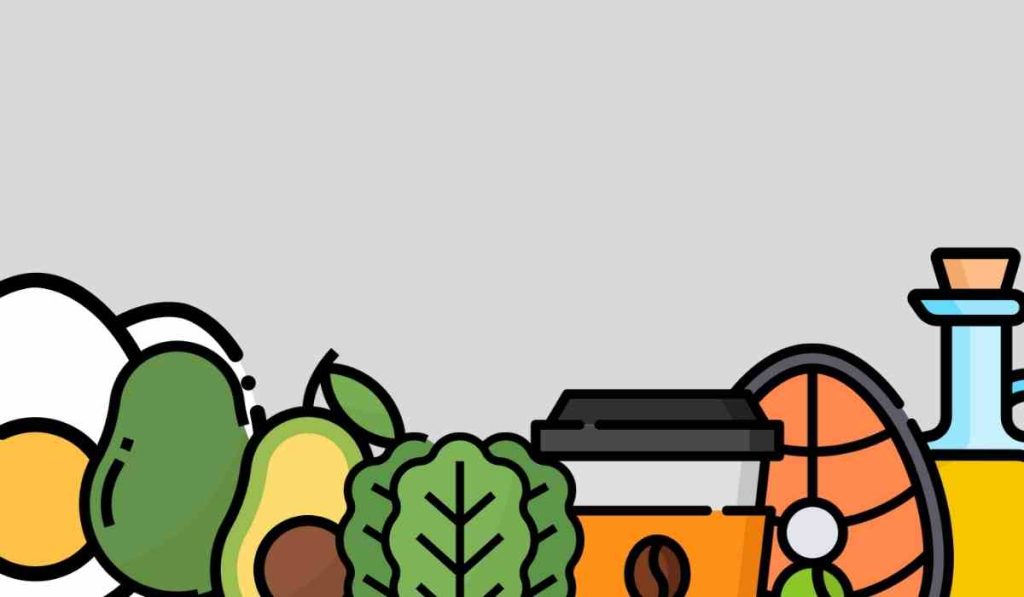
The ketogenic diet is a certified monster when it comes to healthier living.
Thanks to all the benefits it has (weight loss, decreased hunger, and reduced risk of chronic illness), it’s no wonder that people are ditching the carb life for keto.
But like any diet, mastering keto means getting serious about the foods you eat.
Some foods will turbocharge your keto efforts, while others will knock you squarely on your butt and out of ketosis.
In this guide, we are going to look at the best foods to include in your quest to ketosis.
We’ll include proteins, fats, veggies, dairy, drinks, and supplements that are keto-approved.
We’ll also include some sneaky foods that may look keto but you should avoid.
Let’s jump in.
The Keto Diet – How It Works (and Benefits)
The ketogenic diet, or keto, is a low-carb and high-fat diet.
By reducing carb intake, you eliminate the body’s favorite energy source (glucose). This leads to the body having to create an alternative to use as an energy source.
And by eating strategically, the body starts using fat stores to create ketones when there is a low glucose supply.
Presto: ketones are now your primary energy source in this metabolic adaptation.
This process can be a little bumpy for first-timers, resulting in some temporary symptoms that include nausea and headaches–colloquially known as the “keto flu“.
To successfully get into ketosis, carb intake has to be reduced to between 20 to 50 grams per day.
But once your body adapts, it’s go time from there.
Some of the benefits of a ketogenic diet include:
- Promotes weight loss1
- Reduces your hunger levels and cravings2
- Reduces your triglycerides and LDL cholesterol levels3
- Improves your sugar levels4
- Targets harmful and pesky belly fat5
Pretty good list of benefits!
But getting into keto means eating the right food.
And below is a list of foods that you should include to eat on your first day of keto…and beyond.
Keto Food List – 25 Foods to Get You Into Keto (and Keep You There)
Proteins
1. Eggs
Eggs are one of the best ways to include protein in your diet.
It has all the essential amino acids your body needs, making it a complete protein.
One egg has less than one gram of carbs and more than six grams of protein5, making it an ideal option to increase your protein intake while keeping your carb numbers nice and low.
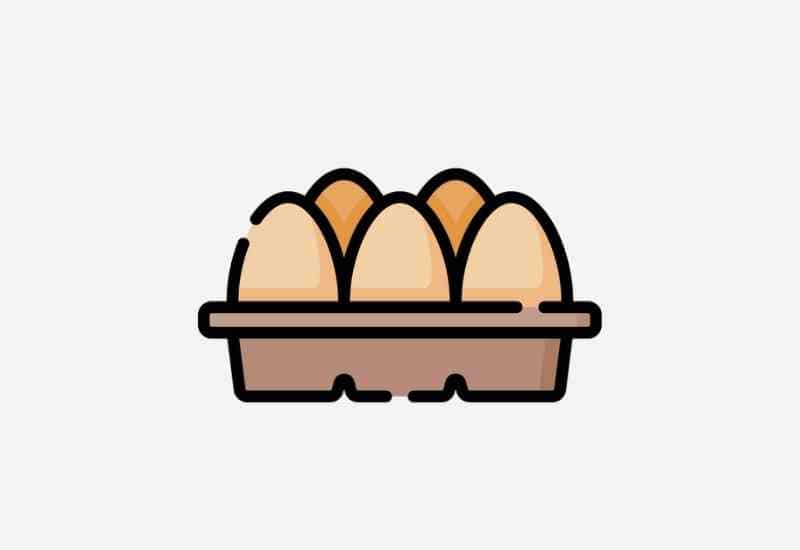
While people are concerned with the cholesterol levels found in the yolk, it is also where most of the nutrients are located, and research shows no problem with consuming whole eggs daily6.
2. Salmon
Another great keto-friendly protein option is salmon.
One of the benefits of salmon is that it provides both protein and fats. The biggest mistake you could make on a keto diet is decreasing your carb intake without increasing your fat intake.
In 3 oz of salmon, you will find 16.9 grams of protein and 8.9 grams of fats7.
Salmon (and other oily fish like mackerel and sardines) are high in omega-3 fatty acids, which have potent anti-inflammatory properties8.
3. Chicken
Chicken is another excellent source of high-quality protein.
Like any animal product, it contains all the essential amino acids your body needs for muscle support.
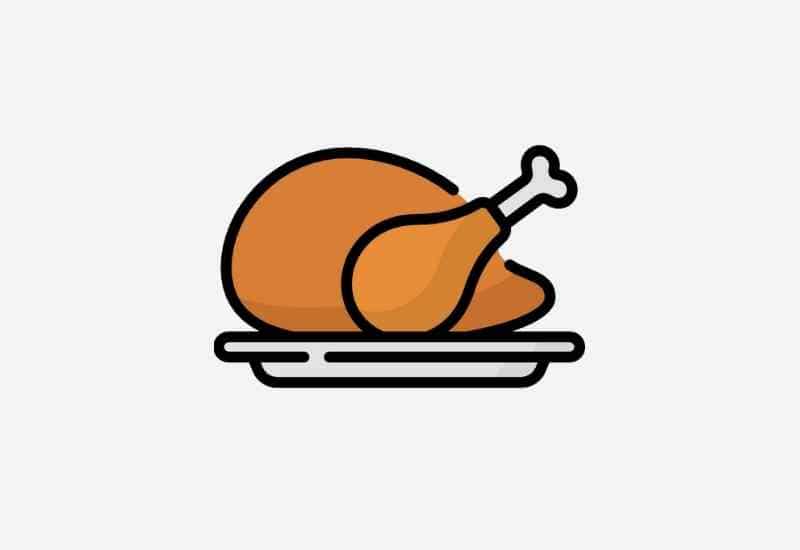
One of the advantages of chicken is its versatility. If you choose chicken breast, you can have a lean protein source, allowing you to add fat from other sources like avocado, olive oil, or olive.
While if you opt for chicken thighs, you get both protein and fats.
4. Tofu
Finally, another excellent protein source is tofu.
Tofu is a great addition for people who want to reduce their animal protein since it’s one of the only plant-based proteins with all the essential amino acids your body needs.
In 100 g of tofu, you only get 1.9 grams of carbs, making it an ideal option for those chasing keto9.
Fats
5. Avocado
Avocados are an excellent source of fiber, and according to a lot of my friends, are especially tasty on toast.
One cup of cubed avocados has 10 grams of fiber (almost half the recommended daily value) and only 2 grams of net carbs.
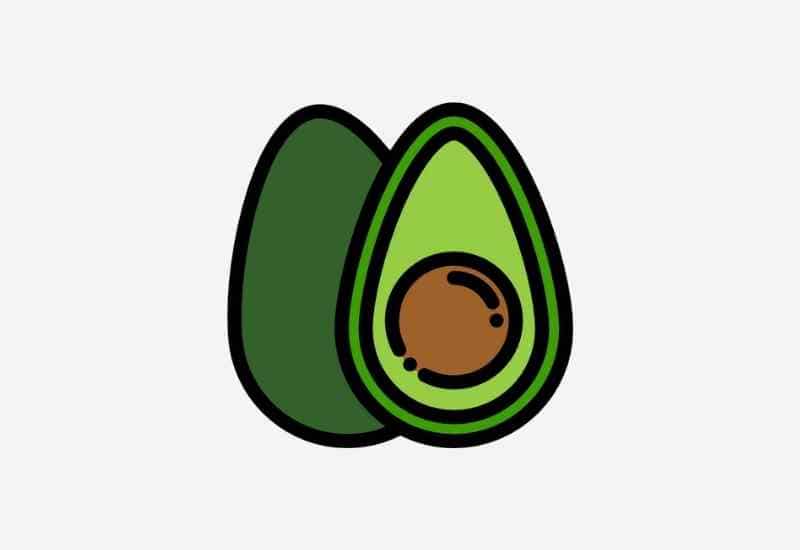
A common side effect of the keto diet is constipation.
Adding some avocados to your diet provides you with healthy fats and fights constipation10.
6. Nut Butter
Nut butter is an excellent snack for those on a keto diet.
(And who doesn’t need a good inventory of snacks when dieting?)
It provides you with healthy fats that can help reduce inflammation and are also a source of plant-based protein.
For example, one tablespoon of almond butter has only 1.4 grams of net carbs and 4 grams of protein (almost the same amount of protein as half a medium egg)11.
However, keep in mind that some nuts have a higher carb content.
Macadamia nut butter, might have a higher carb intake than others, meaning you need to be careful with the portion size.
7. Coconut oil
One of the biggest advantages of coconut oil comes from its medium-chain triglycerides content (MCTs).
Over 65% of the fat content in coconut oil comes from MCTs12.
Studies have shown that coconut oil can boost your metabolism, burning more calories and promoting weight loss13, making it one of my essential keto supplements for conquering ketosis and torching fat.
8. Seeds
Seeds like chia, flax, sunflower, and hemp seeds are an excellent addition to your keto diet.
They are a source of healthy fats (like omega-3 fatty acids), helping reduce inflammation in your body.
Additionally, they are a great source of fiber, and some (like hemp seeds) are an excellent source of plant-based protein.
Three tablespoons of hemp seeds offer 9 grams of protein13, the same as having one and a half eggs. It also provides all the essential amino acids you need, making it a high-quality protein.
9. Olive oil
Olive oil is one of the best foods to support heart health.
The type of fat it has (oleic acid) shows promising results in decreasing the risk of heart disease14.
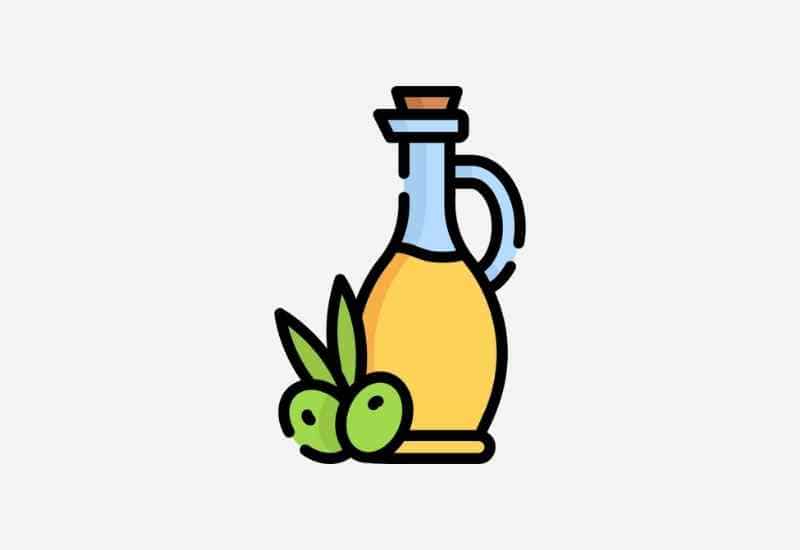
Olive oil is also high in antioxidants. They help reduce the harmful effects of free radicals.
A reduction in your free radicals leads to a reduction in inflammation, a decrease in the signs of aging, and improved recovery15.
10. Butter or Ghee
Butter and ghee are excellent fat sources you can add to a keto diet.
Butter has a low-carb content, while ghee (the concentrated version of butter) doesn’t have any carbs. Some studies have shown that ghee can potentially help reduce inflammation in the body since it has butyric acid16.
This component can also help improve your gut microbiome, leading to better digestion and an improved immune system.
Drinks
While you should always ensure that you are getting lots of water with the ketogenic diet, there are plenty of flavorful drinks that you can consume and enjoy on keto.
11. Coffee
Coffee is a great keto-friendly drink to have as long as it’s unsweetened. It won’t provide you with any significant calories, and it is carb-free.
Caffeine has several benefits, such as improving performance, boosting energy levels, and slightly increasing metabolism17.
If you want to add some flavor to your coffee, try adding some vanilla, cinnamon, or a sugar-free alternative.
12. Green Tea
Teas have the benefit of being high in antioxidants, helping you reduce inflammation.
And one of the best teas you can include on keto is green tea.
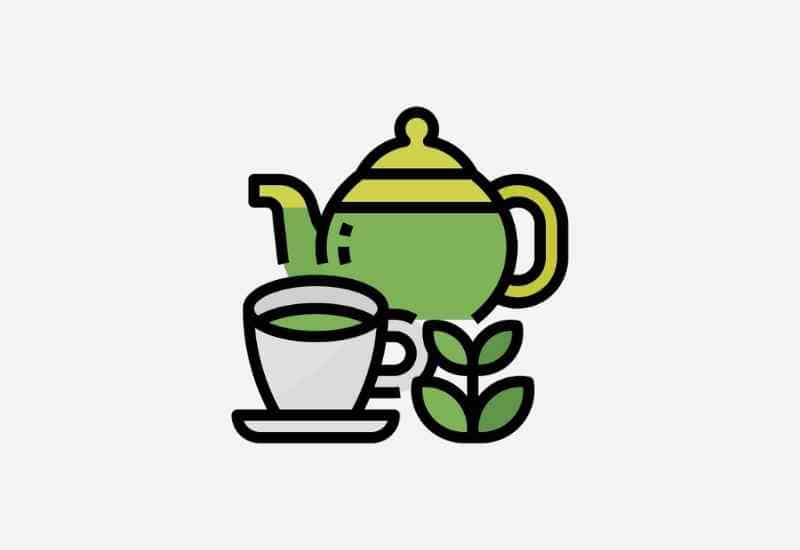
In one study performed on 11 healthy men, those that took a green tea extract saw an increase in fat oxidation of 17%18.
13. Sugar-Free Drinks
Adding variety to a keto diet might sometimes be challenging.
The limitations of a diet can feel you a little… well, trapped.
But sugar-free drinks (like sparkling waters) can give you a sense of sweetness without affecting your ketosis state. This refreshing beverage can be a perfect option for a hot summer or when you are craving something sweet.
As is always good practice, read the nutrition label to ensure it is indeed calorie and carb-free.
Veggies
14. Mushrooms
Mushrooms are very high in protein compared to other vegetables.
One portobello mushroom has 2 grams of protein19, compared to celery (0.7 grams per 100 g), can help you reach your daily protein numbers.
They are also a great source of vitamin D. If you cannot take daily sunlight to increase your vitamin D production.
Make sure to include mushrooms in your diet20.
(Vitamins are a crucial part of nailing the ketosis diet–here’s a more detailed look at how vitamins affect ketosis and which ones to supplement with.)
15. Leafy Greens
Green leafy greens like kale, spinach, lettuce, and collard green are very low in calories and carbs but very high in nutrients.
They are an ideal food to add if you follow a ketogenic diet.
One of their many benefits is that they are very high in iron. While plant-based iron doesn’t absorb as well as iron from animal sources, it can still help you fight anemia21.
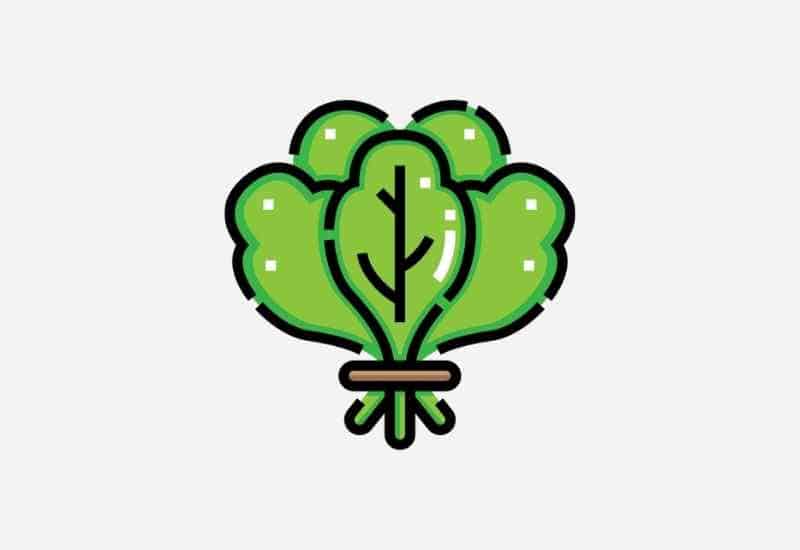
If you are feeling hungry, you can decrease hunger levels by having an extra side of salad or having a green smoothie.
Since most yummy fruits (grapes, bananas, mangoes, etc.) are off-limits with keto, in a keto diet, use an artificial flavor drink (like orange flavor) and mix it up with leafy greens to have the perfect low-carb green smoothie.
16. Zucchini
Zucchini is a very versatile food that becomes your best friend on a keto diet.
If you are missing pasta, you can create zucchini noodles to have a pasta-like dish that won’t affect your ketosis levels.
(Seriously… a keto-friendly pasta sauce and zucchini noodles is surprisingly good.)
On the other hand, if you are missing chips, you can slice them thin. Put them into the air-fryer and have a crunchy snack in the afternoon.
Why are they a great vegetable to add?
One cup of zucchini (124 g) offers only 2.6 g of net carbs.
17. Eggplant
Thanks to its vibrant color, eggplant is very high in antioxidants, especially anthocyanins22.
Antioxidants help reduce inflammation by decreasing the number of free radicals in your body.
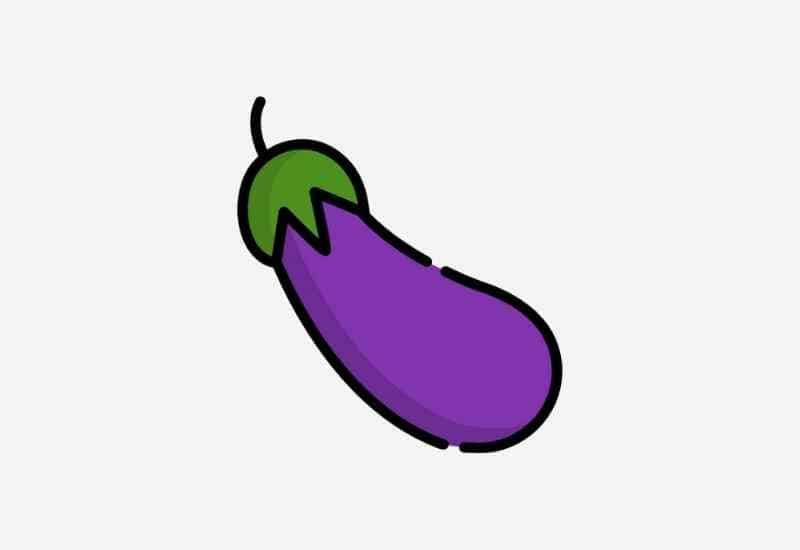
They are also high in nutrients such as potassium, manganese, and folate23.
Pro tip: To avoid having bitter eggplant sprinkle some salt on top and let it soak on top of a piece of paper towel. Leave it for a couple of hours, and then rinse the salt.
18. Cauliflower
Finally, cauliflower is one of the best vegetables to add to a keto diet.
Like zucchini, this vegetable can offer you a lot of versatility in your dishes.
If you are missing rice, throw some cauliflower into a food processor until you get a rice-like consistency. On the other hand, if you are missing pizza, try making a cauliflower pizza crust to avoid filling left out at your next pizza party.
Not only can they replace several high-carb options, but they are also high in fiber and antioxidants24.
Dairy
19. Greek Yogurt
When it comes to dairy, you need to be careful which type you add since some of them can be a significant source of carbs.
Some options, like Greek yogurt, are high in protein and offer very little carb content.
For example, when you compare 100 g of each product, Greek yogurt has only 3g of net carbs25, while regular yogurt has 7g of net carbs26.
Greek yogurt can be a tasty snack that will keep you full for a long time due to its high protein content.
Add some nuts on top to create a parfait, or add it to your smoothies to boost your protein shake, and you are off to the races.
20. Cheese
With cheese, you can kill two birds with one stone.
Depending on the type of cheese, it offers both protein and fats.
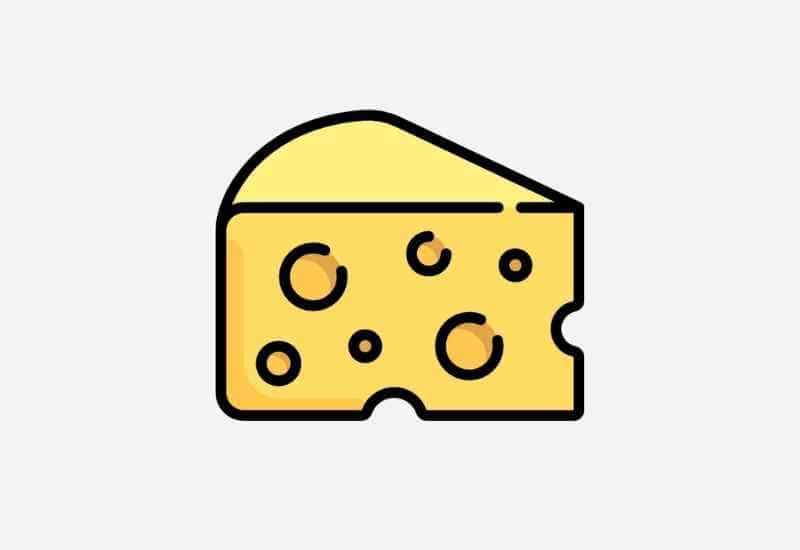
One problem seen is people cannot find a way to include protein in their snacks.
Cheese is a handy way to include protein in your meals, helping you preserve your muscle mass27.
21. Plant-based Milk
Regular milk is high in carbs, making it a big no-no with keto.
One cup of milk offers around 12g of net carbs, making it a very high-carb food for someone on a keto diet28.
Plant-based alternatives like coconut milk and almond milk are excellent substitutes to replace cow’s milk.
One cup of coconut milk only has 2 g of net carbs29, and one cup of almond milk has 3 g of net carbs30.
Taste-wise, they are so similar that most people won’t notice the difference between plant-based milks and cow milk.
That said, be careful with plant-based milk since it might contain added sugars. Look for those that are unsweetened to avoid adding extra carbs.
22. Cream
Cream comes from the fat found in milk. This makes it an ideal food to add since it is low in carbs.
One of the benefits of cream, and dairy products, is their CLA (conjugated linoleic acid) content.
There is some research shows that CLA can help promote weight loss31.
Supplements
23. Protein Supplements
Protein supplements are a handy way to increase your protein if you have trouble reaching your total protein intake.
On a keto diet, avoid plant-based options (unless stated as keto) since they might contain high levels of carbs.
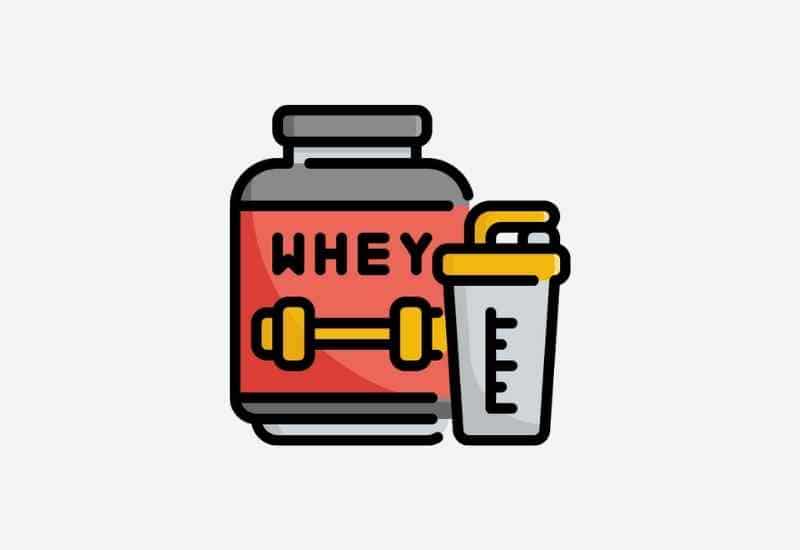
Isolated whey protein is the one that is going to contain the least amount of carbs, and it will give you a high-quality protein.
24. Creatine
Creatine is the best supplement for those looking to add some muscle or improve their performance.
It won’t add additional carbs to your diet, making it one of the top supplement choices for those following a keto diet.
Some of the benefits of taking creatine are:
25. Fish Oil
We have now reached the final food to add to a keto diet, and the anchor position goes to fish oil.
Fish oil is high in omega-3 fatty acids, a healthy type of fat to include since it can reduce inflammation in your body.
If you cannot add fish to your diet at least 2-3 times a week, I recommend taking a fish oil supplement to guarantee you are getting enough omega-3 during the week.
While not a food, ketogenic diet pills–also known as exogenous ketones–are an excellent way to get into ketosis. Supplementing with keto pills can also decrease the symptoms of the keto flu and increase the number of ketones in your blood by over 300%. For a deeper look at the best keto pills on the market, read this guide.
Foods You Should Definitely Avoid on Keto
Now that we have seen which foods to avoid on keto let’s talk about those foods that we should stay away from.
So, which foods do you need to avoid?
Here are some of the ones that aren’t so obvious, but can pack a heavy carb-punch:
- Starchy vegetables. Potatoes, yams, sweet potatoes, and cassava.
- Legumes. Beans, lentils, chickpeas, and quinoa.
- Fruits. Mangoes, bananas, and grapes. Even though fruits are commonly viewed as healthy, they are high in carbs.
- Cashews. They are high in carbs compared to other nuts.
- Butternut squash. It’s high in carbs compared to other options like zucchini.
The Bottom Line
The ketogenic diet is a food-based diet, which means you can’t out-exercise or out-supplement the food you are eating.
At the end of the day, you are going to need to play by the dietary rules of keto in order to maximize all those lofty benefits.
Foods such as salmon, eggs, nuts, seeds, olive oil, and coffee (to name just a few) are some of the best options to include in your ketogenic diet.
Make sure to avoid starchy vegetables, legumes, fruit (some), cashews, and butternut squash, since they are all high in carbs, and if you are not careful, they can get you out of ketosis.
Load up your fridge with keto-friendly options, do some meal prepping and planning, and let the weight loss begin!
More Keto Guides and Resources
⭐ 5 Best Keto Pills: Supercharge Ketosis (Plus Buyer’s Guide and FAQ). Keto pills are a proven way to help kickstart your ketogenic diet efforts so that you can start losing weight and feeling better faster. Here’s a look at the best keto pills on the market right now.
Keto Charge – A Keto Pill That Actually Works (Review). Curious if Keto Charge can help you get into ketosis faster and help you with your weight loss goals? Read on for a full review, including key features, and see if it’s for you.
5 Best Ketone Test Strips (and Alternatives). Want to know if your keto diet plan is working and you are in ketosis? Remove the guesswork with the best keto test strips available online.